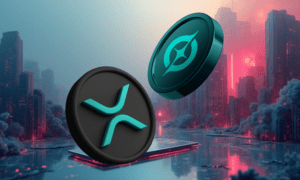The US cybersecurity market is projected to reach $278.5 billion by 2025, yet a staggering 73% of organizations remain unprepared for the quantum computing threat that could render current encryption obsolete within the next decade. As quantum computers edge closer to breaking RSA and ECC encryption the backbone of today’s digital security US tech professionals face an urgent imperative: implement post quantum encryption before it’s too late.
What Is Post Quantum Encryption and Why Should US Tech Teams Care?
Post quantum encryption represents cryptographic algorithms designed to withstand attacks from both classical and quantum computers. Unlike traditional encryption methods that rely on mathematical problems quantum computers can solve exponentially faster, post quantum encryption uses different mathematical foundations that remain computationally infeasible even for quantum systems.
For US tech professionals, the implications are profound. The National Institute of Standards and Technology (NIST) estimates that a cryptographically relevant quantum computer could emerge within 10-15 years. However, “harvest now, decrypt later” attacks are happening today adversaries are collecting encrypted data now to decrypt once quantum computers become available. This means sensitive data with long-term value, from intellectual property to personal health information, faces immediate risk.
The transition to post quantum encryption isn’t just about future-proofing; it’s about protecting data that’s being intercepted right now. US companies handling government contracts, financial transactions, or healthcare data face particular urgency, as these sectors contain information valuable enough to warrant long-term storage by adversaries.
Understanding NIST’s Post Quantum Cryptography Standards
In July 2024, NIST finalized its first set of post quantum encryption standards after an eight-year global competition. These standards provide US organizations with validated algorithms ready for implementation:
FIPS 203 (ML-KEM) – Based on CRYSTALS-Kyber, this module handles key encapsulation, the process of securely exchanging encryption keys. It offers three security levels, with ML-KEM-768 recommended for most applications, providing roughly equivalent security to AES-192.
FIPS 204 (ML-DSA) – Derived from CRYSTALS-Dilithium, this digital signature algorithm ensures data authenticity and integrity. With parameter sets ranging from ML-DSA-44 to ML-DSA-87, it balances security with performance across different use cases.
FIPS 205 (SLH-DSA) – Built on SPHINCS+, this provides an alternative signature scheme based on hash functions rather than lattice problems. While slower than ML-DSA, it offers security diversity crucial for critical infrastructure.
US tech teams should prioritize ML-KEM for key exchange and ML-DSA for digital signatures in most applications. The modular design allows gradual implementation without disrupting existing systems a critical consideration for organizations managing complex tech stacks.
Implementing Post Quantum Encryption in Your US Tech Stack
Transitioning to post quantum encryption requires strategic planning and phased implementation. Here’s a practical roadmap for US tech teams:
Phase 1: Cryptographic Inventory and Risk Assessment Start by cataloging all cryptographic implementations across your infrastructure. Use automated tools like Cryptosense Analyzer or Venafi’s Machine Identity Management platform to discover certificates, keys, and encryption protocols. Document data sensitivity levels and retention periods to prioritize migration efforts.
Phase 2: Hybrid Implementation Deploy hybrid cryptographic solutions that combine traditional and post quantum algorithms. This approach, recommended by NIST, ensures continued security even if vulnerabilities emerge in new algorithms. Major US cloud providers already support hybrid modes AWS offers hybrid key exchange in AWS KMS, while Google Cloud provides post-quantum TLS options.
Phase 3: Testing and Validation Implement post quantum encryption in non-critical systems first. Monitor performance impacts carefully post quantum algorithms typically require larger key sizes and more computational resources. Use tools like OpenSSL 3.0+ with OQS provider for testing, or leverage IBM’s Quantum Safe Explorer for comprehensive migration planning.
Phase 4: Full Migration Roll out post quantum encryption across production systems, maintaining backward compatibility where necessary. Establish crypto-agility practices to enable future algorithm updates without major infrastructure changes.
Real-World Post Quantum Encryption Applications for US Businesses
US organizations across sectors are already implementing post quantum encryption with measurable results:
Financial Services: JPMorgan Chase partnered with Toshiba and Ciena to test quantum key distribution networks, achieving secure communications across their data centers. While QKD differs from post quantum encryption, their parallel implementation of NIST-approved algorithms demonstrates enterprise readiness.
Healthcare: The Mayo Clinic integrated post quantum encryption into their patient data systems, using ML-KEM for secure key exchange in telemedicine applications. Initial deployments showed only 3-5% performance overhead while ensuring HIPAA compliance for long-term data protection.
Technology Sector: Google implemented post quantum algorithms in Chrome, enabling millions of users to test CRYSTALS-Kyber in real-world conditions. Their data showed minimal latency impact less than 1ms additional handshake time for most connections.
Government Contractors: Lockheed Martin deployed post quantum encryption across classified communication systems, meeting NSA’s requirement for quantum-resistant algorithms by 2025. Their phased approach serves as a model for other defense contractors facing similar mandates.
These implementations demonstrate that post quantum encryption is production-ready, with performance impacts manageable through proper optimization and hybrid approaches.
Performance Optimization Strategies for Post Quantum Algorithms
Post quantum encryption algorithms typically require more computational resources than traditional cryptography. US tech teams can implement several optimization strategies to minimize performance impact:
Hardware Acceleration: Leverage specialized hardware where available. Intel’s upcoming Xeon processors include instructions optimized for lattice-based cryptography, while NVIDIA’s cuPQC library enables GPU acceleration for post quantum operations. Benchmark results show up to 10x performance improvements with hardware acceleration.
Algorithm Selection: Choose algorithms based on use case requirements. ML-KEM-512 offers sufficient security for most applications with minimal overhead, while ML-KEM-1024 should be reserved for highly sensitive data. Similarly, use ML-DSA-44 for general signatures and ML-DSA-87 only when maximum security is required.
Caching and Session Resumption: Implement aggressive caching strategies for post quantum key exchanges. TLS 1.3’s 0-RTT resumption becomes even more valuable with larger post quantum keys, reducing handshake overhead by up to 90% for returning connections.
Load Balancing: Distribute cryptographic operations across multiple servers. Post quantum algorithms parallelize well, allowing horizontal scaling to maintain performance. Consider dedicated cryptographic servers for high-volume applications.
Compression Techniques: Apply compression before encryption to reduce data size. This becomes particularly important with post quantum algorithms’ larger ciphertext expansion ratios. Standard compression algorithms can reduce payload sizes by 30-70% for typical application data.
Building a Quantum-Safe Future: Best Practices for US Tech Teams
Creating a quantum-safe infrastructure requires more than just implementing new algorithms. US tech professionals should adopt these best practices:
Establish Crypto-Agility: Design systems to support algorithm changes without major architectural modifications. Use abstraction layers and standardized APIs like PKCS#11 or Microsoft’s Cryptography Next Generation (CNG) to decouple cryptographic implementations from application logic.
Implement Continuous Monitoring: Deploy cryptographic monitoring tools to track algorithm usage and identify vulnerable implementations. Solutions like Keyfactor Command or DigiCert CertCentral provide visibility into certificate lifecycles and encryption protocols across enterprise environments.
Develop Migration Playbooks: Create detailed documentation for post quantum migration procedures. Include rollback plans, performance benchmarks, and compatibility matrices. The Cloud Security Alliance’s Quantum-Safe Security Working Group provides templates adaptable to US enterprise needs.
Train Development Teams: Invest in quantum-safe development training. Organizations like ISACA and (ISC)² now offer post quantum cryptography certifications tailored to US professionals. Internal workshops using NIST’s PQC resources ensure teams understand implementation nuances.
Engage with Standards Bodies: Participate in ongoing standardization efforts through NIST, IETF, and industry consortiums. US tech teams’ real-world feedback shapes future standards and ensures practical implementation considerations are addressed.
The Business Case for Post Quantum Encryption Investment
For US businesses, post quantum encryption represents both risk mitigation and competitive advantage:
Regulatory Compliance: Federal agencies must implement post quantum cryptography by 2025 under NSA directives. Commercial organizations working with government data face similar requirements. Early adoption avoids rushed implementations and potential contract losses.
Customer Trust: Demonstrating quantum-safe practices differentiates security-conscious organizations. Surveys show 67% of enterprise buyers consider post quantum readiness in vendor selection for long-term contracts.
Cost Optimization: Early migration spreads costs over time and allows performance optimization before quantum threats materialize. Delayed implementation may require emergency measures at 3-5x higher costs, according to Gartner estimates.
Intellectual Property Protection: For US tech companies, protecting proprietary algorithms, source code, and research data from future quantum attacks preserves competitive advantages worth billions in market value.
Frequently Asked Questions About Post Quantum Encryption
When will quantum computers actually break current encryption? Expert consensus suggests cryptographically relevant quantum computers may emerge between 2030-2040. However, “harvest now, decrypt later” attacks mean data encrypted today faces future risk, making immediate action necessary for sensitive information with long-term value.
Which post quantum algorithms should US organizations implement first? Start with NIST-standardized algorithms: ML-KEM (FIPS 203) for key encapsulation and ML-DSA (FIPS 204) for digital signatures. These provide optimal balance of security, performance, and standardization for most US enterprise applications.
How much will post quantum encryption slow down our systems? Performance impact varies by implementation but typically ranges from 2-10% for well-optimized deployments. Hardware acceleration and hybrid approaches can reduce overhead to negligible levels for most applications.
Can we use post quantum encryption with existing infrastructure? Yes, hybrid implementations allow post quantum algorithms to work alongside traditional cryptography. Major platforms like OpenSSL, Microsoft CNG, and Java Cryptography Architecture support post quantum algorithms through extensions.
What’s the difference between quantum key distribution and post quantum encryption? Quantum key distribution (QKD) requires specialized quantum hardware for key exchange, while post quantum encryption uses mathematical algorithms resistant to quantum attacks. Post quantum encryption works with existing classical computers, making it more practical for immediate deployment.
How do we maintain backward compatibility during migration? Implement hybrid cryptographic modes that use both traditional and post quantum algorithms. This ensures interoperability with legacy systems while providing quantum resistance. NIST’s migration guidance recommends this approach for enterprise deployments.
Which US industries face the highest urgency for post quantum migration? Financial services, healthcare, defense contractors, and critical infrastructure operators face immediate pressure due to regulatory requirements and data sensitivity. However, any organization handling long-term valuable data should begin migration planning now.





























